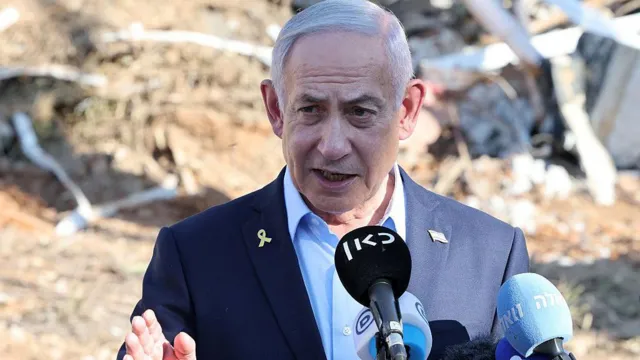Ceasefire negotiations between Israel and Hamas have commenced in Qatar, marking a critical juncture in the ongoing conflict in Gaza. The talks are happening concurrently with Israeli Prime Minister Benjamin Netanyahu’s impending visit to Washington D.C. for a meeting with U.S. President Donald Trump. This diplomatic flurry signals a heightened effort to de-escalate the situation and secure the release of hostages.
Prime Minister Netanyahu has indicated that his meeting with President Trump is expected to bolster progress towards a deal that would facilitate the release of more hostages and establish a ceasefire in Gaza. He stated that he has provided clear directives to his negotiating team, emphasizing the objective of achieving a ceasefire agreement that aligns with Israel’s previously accepted conditions. This assertion suggests a potential for concessions, although the specifics remain undisclosed.
Hamas has responded positively to the latest ceasefire proposal, according to their statements. However, significant gaps persist between the demands of both parties, posing a substantial challenge to reaching a comprehensive agreement. Hamas continues to insist on an end to all hostilities and the complete withdrawal of Israeli forces from Gaza, terms that Israel has previously rejected.
Netanyahu’s government has consistently maintained its commitment to three core objectives: securing the return of all hostages, dismantling Hamas’s military and governing capabilities, and ensuring Gaza poses no future threat to Israel. These aims underscore the complex balancing act Netanyahu faces as he navigates both domestic political pressures and international diplomatic overtures.
Mediators from Qatar and Egypt are tasked with bridging the divides between Israel and Hamas. The current talks aim to overcome the sticking points that have previously thwarted ceasefire initiatives, including an agreement that ended in March. Since then, Israel has intensified its military operations in Gaza, accompanied by a prolonged blockade on aid, though some restrictions have been eased in recent weeks.
The Israeli military reported striking 130 Hamas targets and neutralizing numerous militants in the past 24 hours alone. Meanwhile, the humanitarian toll in Gaza continues to rise, with health officials reporting over 30 fatalities on Sunday. This stark reality highlights the urgent need for a peaceful resolution.
The success of the Qatar talks hinges on the willingness of both sides to compromise. Additionally, the upcoming meeting between Netanyahu and Trump could play a pivotal role in shaping the future of the conflict, potentially influencing Netanyahu’s approach to a ceasefire. Many Israelis are eager for a deal that prioritizes the safe return of the hostages, as evidenced by ongoing public demonstrations urging Netanyahu to reach an agreement.
However, hardline factions within Netanyahu’s cabinet, including National Security Minister Itamar Ben Gvir and Finance Minister Bezalel Smotrich, have voiced strong opposition to ending the war before Hamas is completely eradicated. This internal dissent adds another layer of complexity to the peace process.
As the diplomatic efforts unfold, there is a palpable sense of momentum towards a potential ceasefire. Yet, the persistent divergence in core demands from both the Israeli government and Hamas introduces an element of uncertainty. Palestinians in Gaza and the families of Israeli hostages remain hopeful that these negotiations will not result in another failed attempt at peace.
The current conflict began following Hamas’s attacks on October 7, 2023, which resulted in approximately 1,200 deaths and the taking of 251 hostages. Since then, the health ministry in Gaza, administered by Hamas, reports that at least 57,338 people have been killed in the territory.

